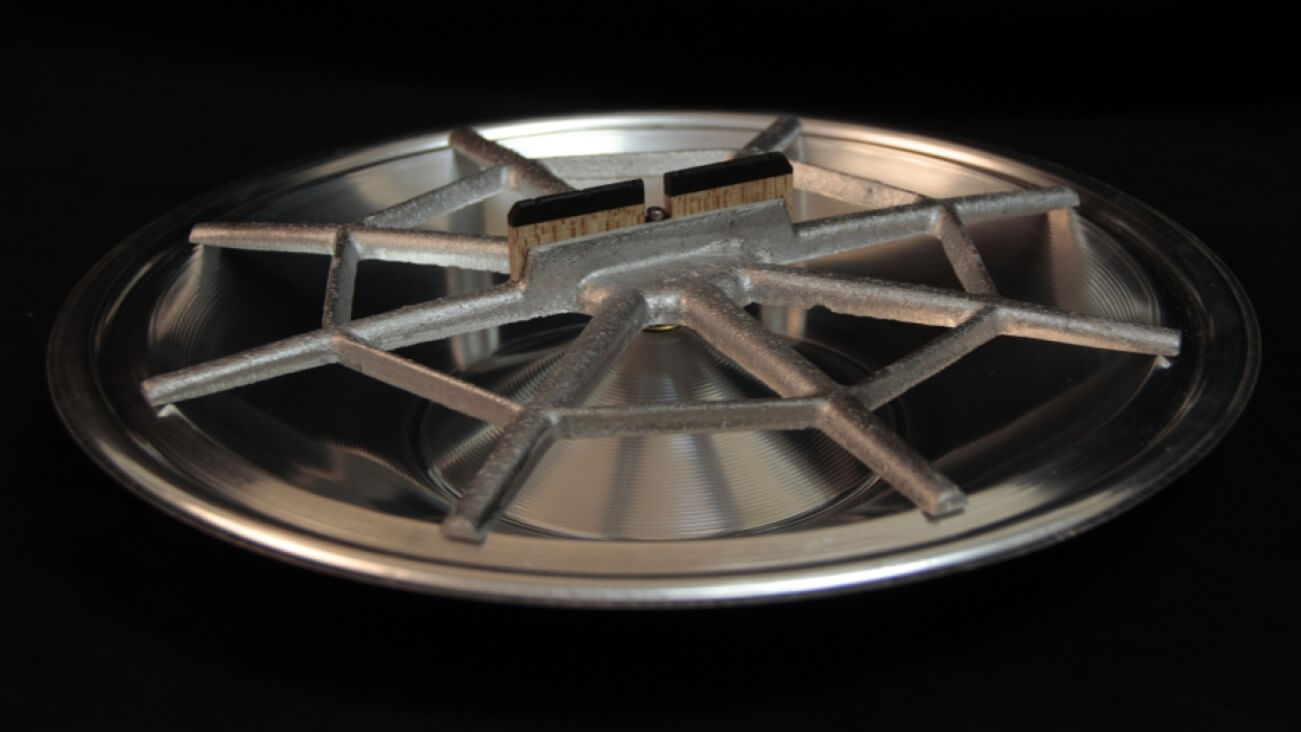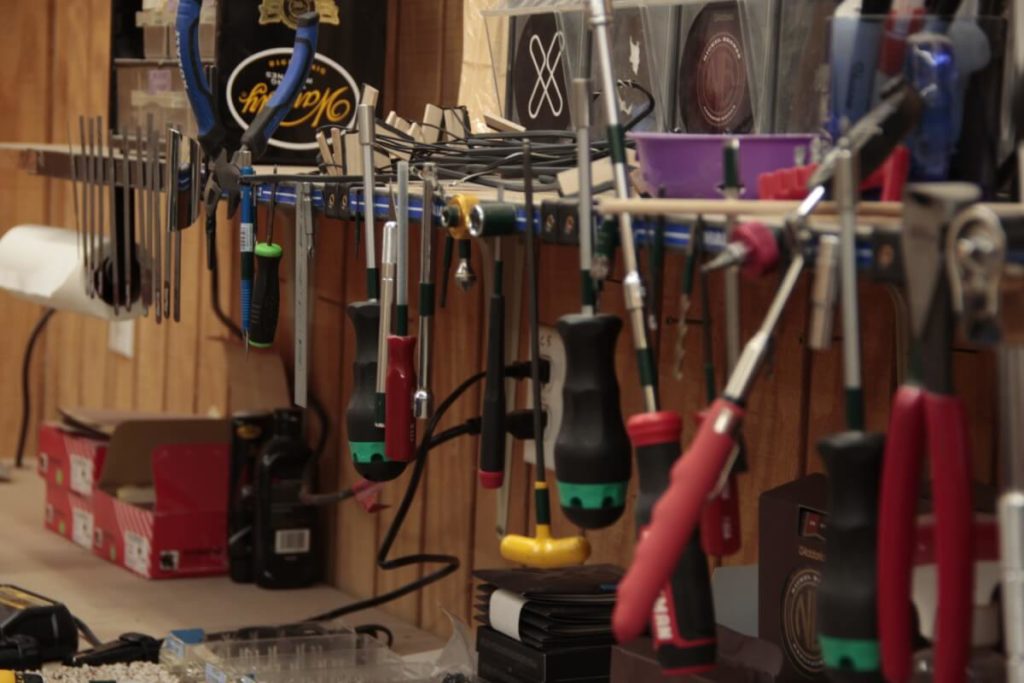Support
Cone Care
Keeping the cone clean is important to prevent surface oxidization. Excessive oxidation causes the cone to lose volume and tone over time.
Carefully remove the strings, coverplate, and cone from the guitar. Clean the cone off with a non-corrosive polish such as the Beard Resolution™ polish. Cones are extremely delicate and need to be handled with care. Alternately, you can use a can of compressed air to blow the lint and other dirt out from under the coverplate. Be sure to blow from a distance as to not damage the cone.
In addition to corrosion, the aluminum cone begins to work fatigue over time. This will cause a cone to slowly lose volume and tone resulting in poor sonic performance. We recommend a cone replacement after 2 years. Professionals usually replace their cones at least once a year of regular playing.
The purpose of the tension screw is to couple the spider bridge to the cone. To achieve the proper amount of tension, string the resonator guitar and bring it up to pitch. Loosen the tension screw so that it is no longer in contact with the spider. Then tighten the tension screw until the head of the screw makes contact with the spider. Add an additional 1/4 to 1/2 of a turn at maximum.
A loose tension screw will cause buzzes, rattles, and a hollow sound. An overly tight tension screw will stress the cone and destroy it.


Buzzes and Rattles
• Debris on Cone: Occurs on all strings. See Cone Care.
• Loose Hardware: Occurs on all strings. Check tightness of all screws on coverplate, tuners, and the tailpiece/strap button.
• Strings/Bar: Occurs on individual strings. If the strings are old or if the wrapping of the wound strings become loose (can happen on new factory strings), they will create a “zinging” sound. Additionally, imperfections in the bar such as divots or worn chrome/steel can create buzzes.
• Worn/Bad string slots: Usually isolated to a certain string. The slots on the bridge and nut can get worn down over time. Resonator strings need to have the right size slot and the correct slot angle. Redressing and leveling slots should be done by a qualified repair person.
• Spider Assembly Misaligned: Occurs on all strings. The spider assembly over time turns clockwise. Using a small screwdriver, carefully pry on the spider legs against the coverplate (without touching the cone) so that the 12 o’clock leg is situated between the 3rd and 4th string. If the spider system will not move easily: STOP. The system has a pinched cone and requires professional attention.
• Pinched Cones: Old guitars overtime can develop an oval shaped cone ledge due to string tension compressing the guitar. This will cause the cone to be pinched or encapsulated in the guitar. This condition drastically affects the sound of the guitar and requires top routing by a qualified repair person.
• Loose Neck: Incredibly rare. Requires a full disassembly and needs to be sent in for repair.
• Unleveled Spider Bridge: The spider bridge system should sit perfectly flat where it connects with the cone. Requires disassembly and should be sent in for repair.
Other FAQs
Due to their construction, resonator guitars are less susceptible to environmental factors than other instruments. However, excessive humidity and excessive dryness can cause the wood in the instrument to swell or shrink. A humidity between 45% and 55% is optimal. We recommend keeping your guitar in its case when it is not being played. Extreme temperatures can also cause structural damage. We suggest that a guitar is never left beside a baseboard heater or in a hot car. An ideal temperature range is between 40- and 90-degrees Fahrenheit.
Cleaning is important to maintain the finish of the guitar. Dirt and oil from a player’s hands can deteriorate the finish of both the metal parts and the wooden body. We recommend using our Beard Resolution™ polish.
Found on our roundneck models, the truss rod is designed to keep the neck straight down the length of the neck and not for adjusting the guitar’s action. Beard guitars have a double action truss rod which means you can adjust it for a bow or a hump. It is advised that a professional do any truss rod adjustments.
